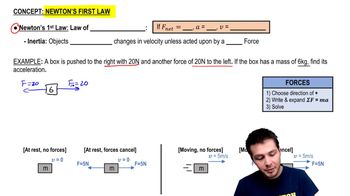Due to a jaw injury, a patient must wear a strap (Fig. E) that produces a net upward force of N on his chin. The tension is the same throughout the strap. To what tension must the strap be adjusted to provide the necessary upward force?
<IMAGE>
 Verified step by step guidance
Verified step by step guidance Verified video answer for a similar problem:
Verified video answer for a similar problem:



 6:54m
6:54mMaster Intro to Forces & Newton's Second Law with a bite sized video explanation from Patrick
Start learning